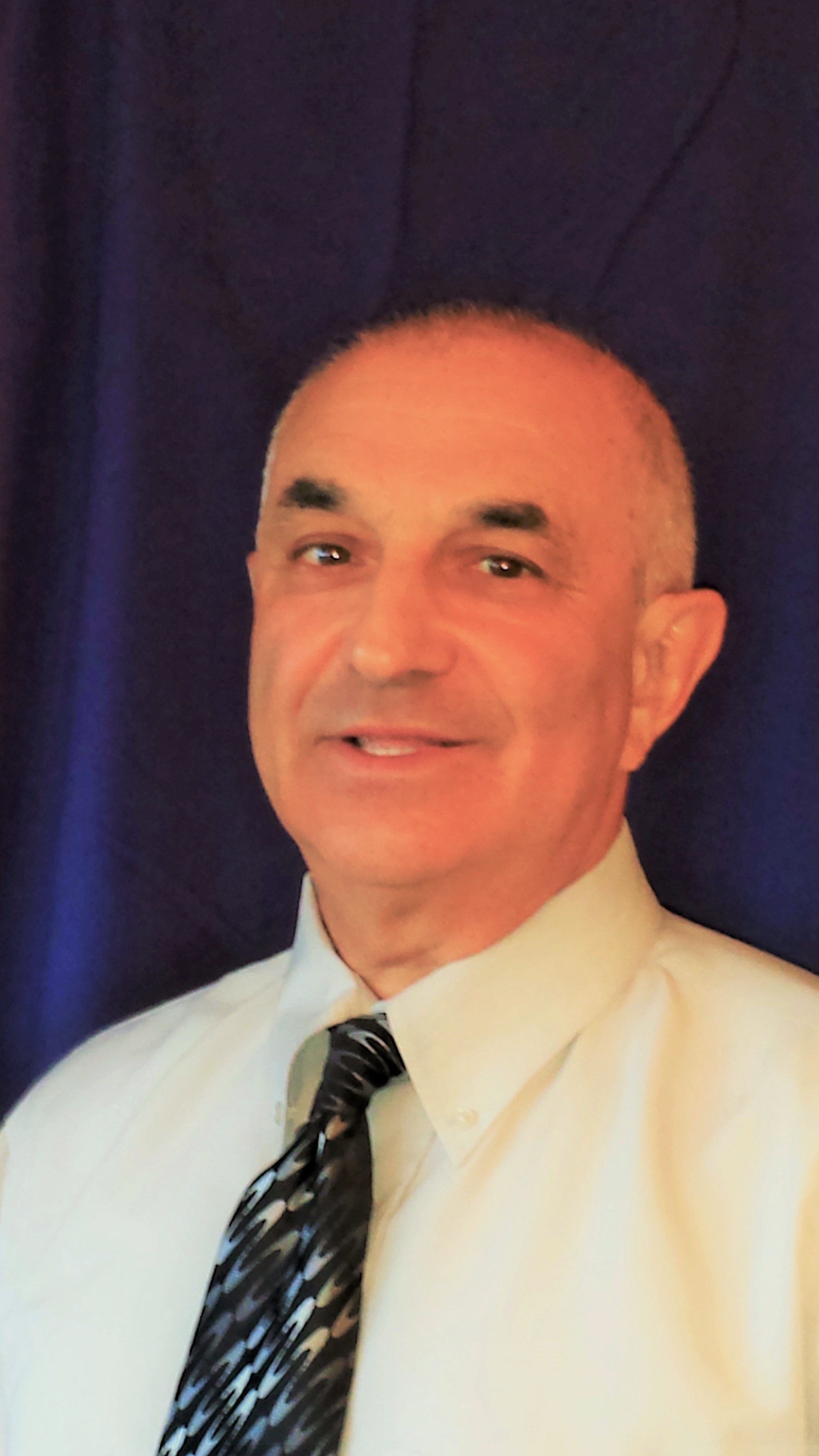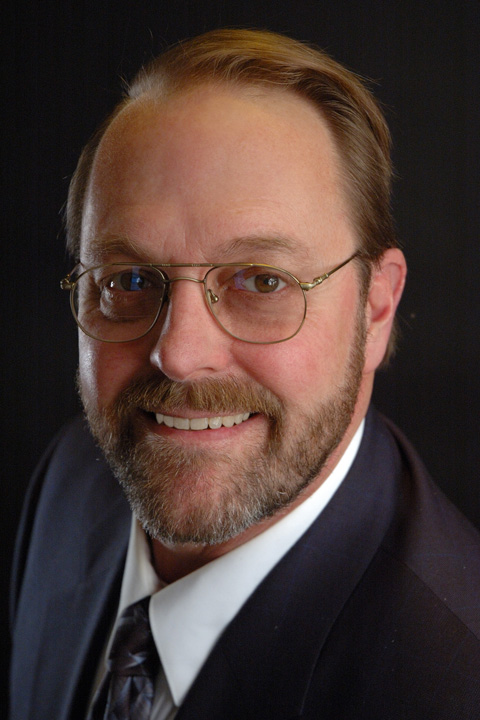2015 Meetings
The linked titles of some meetings are the presentations speakers provided.
December 08, 2015: " Go Big or Go Home: The First Transatlantic Telegraph Cable and the Birth of Electrical Engineering " Thomas Lee, Stanford University
Abstract: Electrical engineers are the children of a failure so traumatic that we don't even talk about it. American paper magnate Cyrus West Field wanted to span the Atlantic in the 1850s with a telegraph cable; it was the Victorian era's equivalent of shooting for the moon. Amplifiers would not exist for another half-century, so success would require mastery of a number of complex technical disciplines. Regrettably, the project's technical head was a medical doctor. A British board of inquiry convened to assess the resulting failures noted that the electrical arts lacked even a basic vocabulary to describe the failure. William Thomson was eventually named the new head of the project, and final success followed in 1866. The volt, ohm and ampere were formally defined shortly thereafter and the profession of electrical engineering was born. Thomson -- arguably the first professional electrical engineer -- became Lord Kelvin, and EEs have been busy making mischief ever since.

Bio: Thomas H. Lee is an electrical engineering professor at Stanford University. In 1994 he founded the Stanford Microwave Integrated Circuits Laboratory. He has written and co-authored several books and papers, and recently concluded a tour of duty as the director of DARPA’s Microsystems Technology Office.
November 10, 2015: " Power Integrity methodology evolution " Iliya Zamek
Abstract: Power Integrity (PI) solutions are strongly impacting high speed products performance. Early PI methodology was simple and widely accepted by engineering society. With advancement of nm-technology sophisticated simulation tools have been developed that allow analysis and optimal design of a system of Chip-Package-PCB. Modern PI methodology is oriented on layout and post-layout design stages, mainly, and become complex field of subject matter experts. For these reasons, at product development practical engineers and PI specialists are still often using early PI methodology. We will demonstrate that implementation of the widely accepted early methodology often worsen the product performance instead of improving it. We will discuss how these problems might be avoided with new PI approach applicable for the pre-layout design, when many product parameters are not yet finalized. New noise and power induced jitter effects revealed in modern nm-devices will be also demonstrated; these measurement experiments helped to gain more understanding of the processes in the power distribution network.

Bio: Iliya Zamek is an Electronic Industry veteran with over 30 years’ experience. He has held various engineering and management positions at design measurement Instrumentation and ATE, crystal oscillators (XO, TCXO, VCXO), developing Product & Test engineering and new product introduction (NPI) of high speed semiconductor devices like PLL, FPGA, ASIC, 100/40G Serdes Transceivers, etc. He received BS, MS, and PhD in Physics and Electronics from Nizhny Novgorod University. His doctoral research was in the area of analysis and reduction of noise, jitter, and random wave’s impact on electronic systems performance; early research of Jitter and Signal Integrity made him one of the pioneers in this field. For the last 14 years he has been leading R&D projects on research complex Jitter and Power Integrity effects in nm-devices working in Altera, Semtech, Inphi Corp., and other companies. Since 2006 he has been serving as a Member of DesignCon Technical Program Committee and conference tracks co-chair and co-organizer, particular for the Measurement Methodology and Power Integrity Tracks. He has published more than 50 papers and awarded by 20 patents.
October 13, 2015: " Seeing is Believing – Demonstration data showing three EMC Concepts " Scott Piper, General Motors Corporation
Abstract: Three subjects will be discussed – (1) Shielding for EMC , (2) Crosstalk on Printed Circuit Boards, and (3) Embedded Capacitance vs. Circuit Board Topology. Measurement data will be presented along with numerical modeling data and simple textbook equations to further explain the measurements.

Bio: Scott Piper has earned a BSE in Electrical Engineering from the University of Michigan – Dearborn in 2004. Scott has since worked as an EMC engineer in both the Aerospace and Automotive industry and was the primary engineer responsible for the initial purchase and implementation of 3D electromagnetic simulation tools in two corporations. Scott currently works for General Motors Corporation as an EMC engineer where he is a global resource for EMC modeling and simulation.
September 08, 2015: " Very-Near-Field Solutions to EMC Compliance Problems - Real World Case Study " Ruska Patton, EMSCAN Corporation
Abstract: While chambers are the required tool for compliance testing, they are not the best tool to use for debugging when a device fails. Chambers offer limited capability to diagnose root causes and the corrective iteration cycle is long and costly. Systematic problem isolation of components can be effective but it is slow and does not always deliver a resolution. An alternate method is using a very-near-field scanner. A near-field scanning system can offer insightful diagnostics and when used early in product design it can improve pre-compliance preparation. This presentation will show how the diagnostic capability of very-near-field scanning can be used to solve problems at a board level using a real world case study.

Bio: Ruska Patton is responsible for the evolution of EMSCAN's real-time near-field measurement solutions. He has a comprehensive understanding of general EMC, EMI and RF design and troubleshooting, with excellent skills in related software applications and programming. Mr. Patton holds both a B.Sc. and M.Sc. in Electrical Engineering from the University of Saskatchewan. During his time at University, he was recognized with numerous IEEE awards and a distinguished research scholarship.
May 12, 2015: " Introduction to Antenna Calibration Methods: An overview of new antenna developments, related standards, calibration and what you need to know for efficient and compliant EMC testing " Doug Kramer, ETS-Lindgren
Abstract: This presentation will provide an overview on antenna calibration, what it means to calibrate an antenna and why you should care. The set of operations for an antenna calibration that establish the relationship between values of quantities indicated by a measuring instrument and a reference standard will be explained. Essential concepts will be reviewed, such as metrology, verification, validation, and accreditation. Case studies will be provided on these concepts to provide practical examples of the concepts as applicable in the real-world. Finally, traceability and measurement uncertainty will be discussed according to standards such as ANSI C63.5, SAE ERP 958, IEEE 291, and CISPR 16-1-6. The presentation will conclude with a review of new antenna developments, including tips on which antenna to use for what measurement application, trade-offs in evaluating different antennas, and the new "balance test" for biconilog antennas.
Bio: Doug Kramer is the Manager of the Calibration/EMC/Wireless Labs for ETS-Lindgren in Cedar Park, Texas. He has over 12 years of experience in managing a commercial test laboratory and providing test solutions to a variety of customers. He holds BSEE and MSEE degrees in Electrical Engineering from the University of Nebraska-Lincoln and is the outgoing Chair of TC1 of the IEEE EMC Society. Doug supports the technical staff at ETS-Lindgren, many of whom are active contributors to the leading wireless industry organizations, including the WiMAX Forum®, CTIA – The Wireless Association®, 3GPP, and the Wi-Fi Alliance®. Prior to joining ETS-Lindgren, Doug was the General Manager for the Nebraska Center for Excellence in Electronics (NCEE), the only full service EMC, environmental and safety product testing facility in Nebraska. He is a contract Senior Assessor to ISO/IEC 17025 and is an iNARTE certified EMC Engineer, a member of the CISPR B working group and Vice Chair of the ANSI C63.5 working group.
April 14, 2015: " DC-DC voltage converter switching noise – coupling mechanisms and mitigation approaches " Xiaoning Ye, Intel
Abstract: In this presentation, various DC-DC voltage converter switching noise coupling mechanisms will be discussed. Practical design examples with noise coupling issues will be demonstrated and noise mitigation approaches will be discussed as well. In addition, near field scanning results will be provided to reveal the hot spots with switching noise. Simulation methodologies, as well as design guidelines on how to avoid switching noise will also be addressed in details in the presentation.
Bio: Xiaoning Ye is currently a Principal Engineer at Intel Corporation, working on signal integrity of high speed interconnects in Server systems. He received his Bachelor and Master Degrees in electronics engineering from Tsinghua University, Beijing, China, in 1995 and 1997 respectively, and Ph.D. degree in electrical engineering from University of Missouri – Rolla (currently Missouri University of Science and Technology) in 2000. He has published over 50 IEEE and other technical papers, and holds 5 patents and 5 patent applications. Dr. Ye was Chair of the TC-10 (Signal and Power Integrity Committee) of IEEE EMC Society from 2012-2014. He was also TPC co-chair of the 2014 IEEE international conference on Signal and Power Integrity, and TPC vice chair of the 2015 Symposium on EMC and SI.
March 10, 2015: " Using Absorbing Materials for high frequency EMI/EMC performance " Bruce Archambeault
Abstract: Many of today’s electronic systems include data rates above 1 GHz. In fact, data rates in the 10-20 Gb/s range are becoming quite common. EMI/EMC containment using traditional shielding approaches is nearly impossible, requiring the use of absorbing materials. However, vendors offer a confusing range of materials and EMC engineers typically must try-it-and-see in order to determine if a material will be effective or not. This seminar will examine these materials and their applications in order to help the engineers understand the tradeoffs from various materials and their possible uses.

Bio: Dr. Bruce Archambeault is an IEEE Fellow, an IBM Distinguished Engineer Emeritus and an Adjunct Professor at Missouri University of Science and Technology. He received his B.S.E.E degree from the University of New Hampshire in 1977 and his M.S.E.E degree from Northeastern University in 1981. He received his Ph. D. from the University of New Hampshire in 1997. His doctoral research was in the area of computational electromagnetics applied to real-world EMC problems. He has taught numerous seminars on EMC and Signal Integrity across the USA and the world, including the past 12 years at Oxford University.
Dr. Archambeault has authored or co-authored a number of papers in computational electromagnetics, mostly applied to real-world EMC applications. He is a member of the Board of Directors for the IEEE EMC Society and a past Board of Directors member for the Applied Computational Electromagnetics Society (ACES). He currently serves as the Vice president for Conferences of the EMC Society. He has served as a past IEEE/EMCS Distinguished Lecturer , EMCS TAC Chair and Associate Editor for the IEEE Transactions on Electromagnetic Compatibility. He is the author of the book “PCB Design for Real-World EMI Control” and the lead author of the book titled “EMI/EMC Computational Modeling Handbook”.
February 10, 2015: " Electrical Design for High-End Computer Systems " Dale Becker, IBM
Abstract: The electrical design of computer systems includes signal integrity, power integrity, electromagnetic emissions and susceptibility and ESD. Practicing engineers in system design and development typically are skilled more deeply in one of these areas than the others. However, these are not independent disciplines and today's dense packaging and high-speed signals require more cross-discipline skills that we call co-design and co-analysis. This presentation comes from the perspective of an engineer most deeply skilled in the power integrity discipline and explores the building of cross-discipline skills focusing on the application of electromagnetic extraction and circuit simulation tools to electrical modeling that enables co-design for robust system development.
Bio: Dale Becker received the B.E.E degree from the University of Minnesota, M.S.E.E. from Syracuse University and the Ph.D. from the University of Illinois at Urbana Champaign. He is the Chief Engineer of Electronic Packaging in IBM Systems and Technology Group and a member of the IBM Academy of Technology. His responsibility is the electrical system architecture of POWER and System z servers including the design of high-speed channels to enable the computer system performance and the power distribution networks for reliable operation of the integrated circuits that make up the processor subsystem.
Dr. Becker has been the General Chair of the IEEE EPEPS 2014 Conference and co-chair of the 2014 IEEE EMCS embedded conference on SIPI TPC. He has 25 patents on electrical design of computer systems and has presented 75 papers in refereed journals and international conferences covering many aspects of electrical computer system design including power distribution analysis and design and modeling of signal and power distribution networks. He is an IEEE Fellow, an iNEMI Technical Committee member and a member of IMAPS and SWE.
January 13, 2015: " Smart Grid EMC Standards Harmonization " Jerry Ramie, ARC Technical Resources
Abstract: This Presentation describes how the SGIP (Smart Grid Interoperability Panel), under NIST, started work on identifying "gaps" in US immunity testing Standards for smart grid communications networking equipment. The five testing gaps were reported in their SGIP-EMI Issues white paper and used as input for the extension of IEEE-1613(2009), which covered immunity testing of protective relays under the IEEE Power & Energy Society.This extension, IEEE-1613.1(2013), currently covers all utility networking and communications equipment, including protective relays and smart-meter communications cards. It now harmonizes closely to what is required under the IEC. It is now being expanded in scope to include almost all utility-owned smart grid equipment.(including non-communicating autonomous devices) These five "gap" immunity tests and other features in this new Standard extension are discussed.

Bio: Jerry Ramie is a 33-year veteran of the EMC test and measurement equipment business. He is Secretary of the ANSI-ASC-C63® Committee on EMC, a Member of the American Radio Relay League EMC Committee, a 2011 Distinguished Lecturer for the IEEE EMC Society on Smart Grid, a Member of the SGIP2-EMI Issues Working Group, the Vice-Chair of the IEEE Power and Energy Society Substations C2 Working Group, a duo-decade Member of The dB Society, an iNARTE-certified EMC technician and a Senior Member of the IEEE.